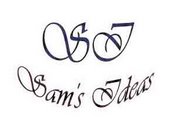Why are 1, 2, 3, etc written in the way we write them?
We started counting 1, 2, 3, etc very early in our childhood. But do you know the significance of those symbols, i.e. why one is written as 1, two 2, and so on?
The symbolic representation of Roman numerals is pretty straightforward, e.g. symbol for one is I (one finger), two is II (two fingers) and three is III (three fingers). And when you raise all your five fingers with all but the thumb pressed together (just like when you take an oath), you'll see that the thumb and the rest of your five fingers are making a "V": that's how you get V for five. If you put one finger to the left of "V", it's negative one (left = sinister = bad ~ negative), and similarly when you put it on the right you have a positive one (right = good ~ positive): that's how you get IV for four (= 5-1) and VI for six (= 5+1). In the same way you get VII for seven and VIII for eight. You get X (ten) when you use all ten fingers of your hands in the opposing "V" position. Now you must have guessed how you get IX for 9, XI for eleven and so on. Don't ask me why they started using other letters later on (e.g. L for fifty, C for hundred, D for five hundred and M for thousand), because I don't know! (I guess C has something to do with century).
But we are not talking about Roman numerals. How did we get the symbols for the Arabic numerals (e.g. 1, 2, 3, .......)?
Dr. Malka has an idea that it is all about angles. When you write down 1 you draw one angle, for 2 two angles and so on. No wonder why 0 is zero! He gave a diagram to support it and I think it's pretty intriguing (although I didn't like 5, 7 and 9, and moreover he didn't give any reference).
Have you seen/ read this somewhere else?
Link: Dr. Malka's website



No comments:
Post a Comment